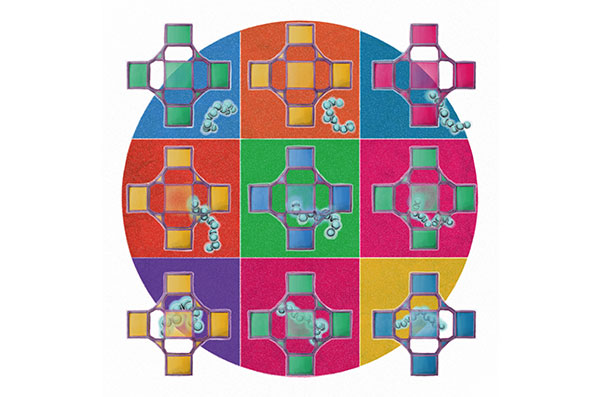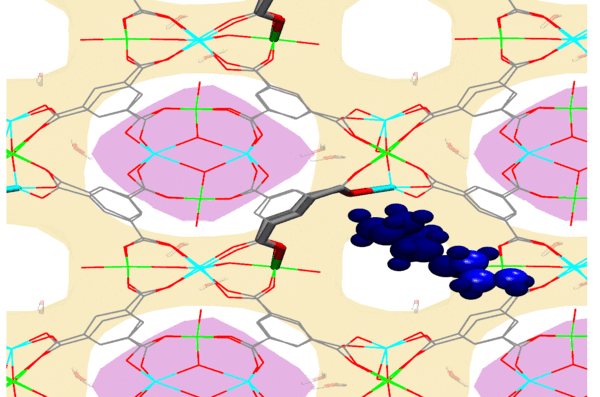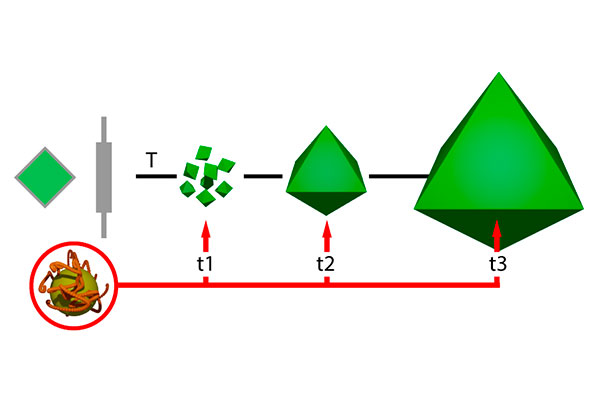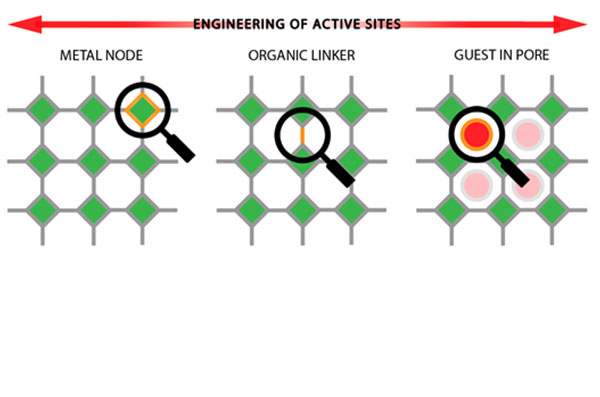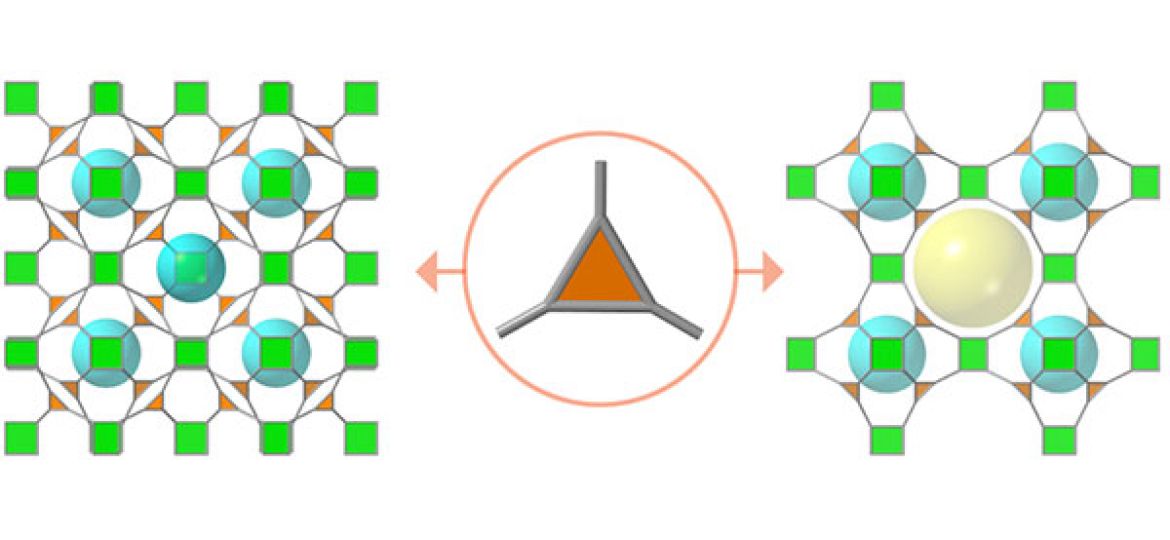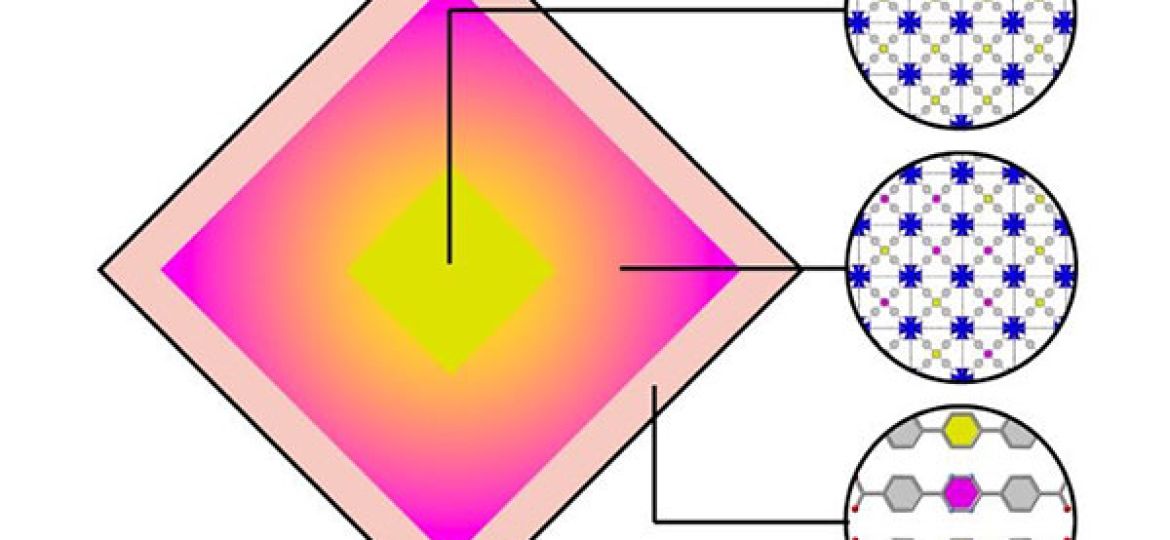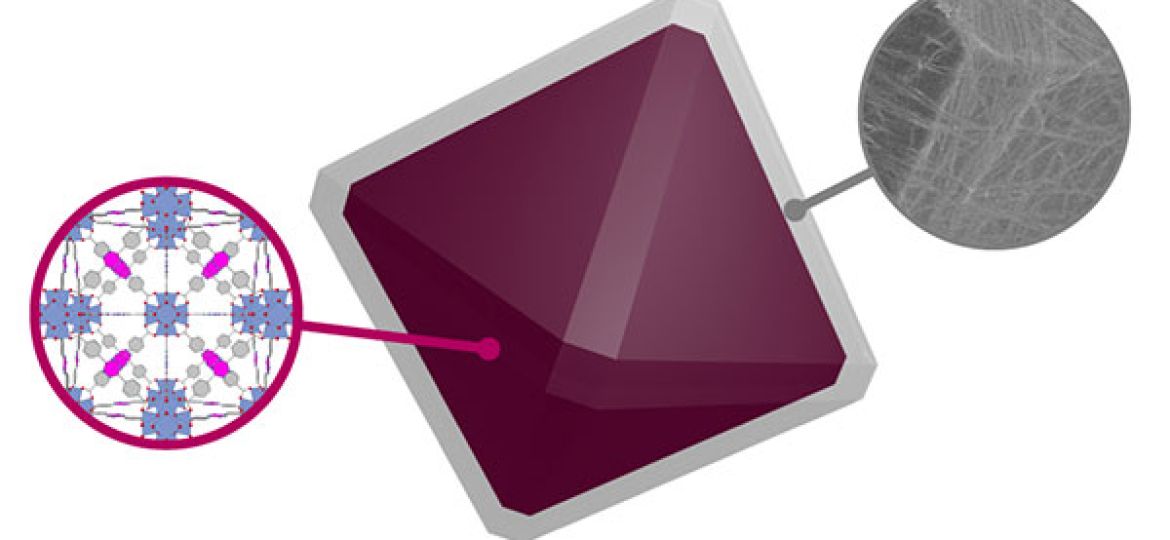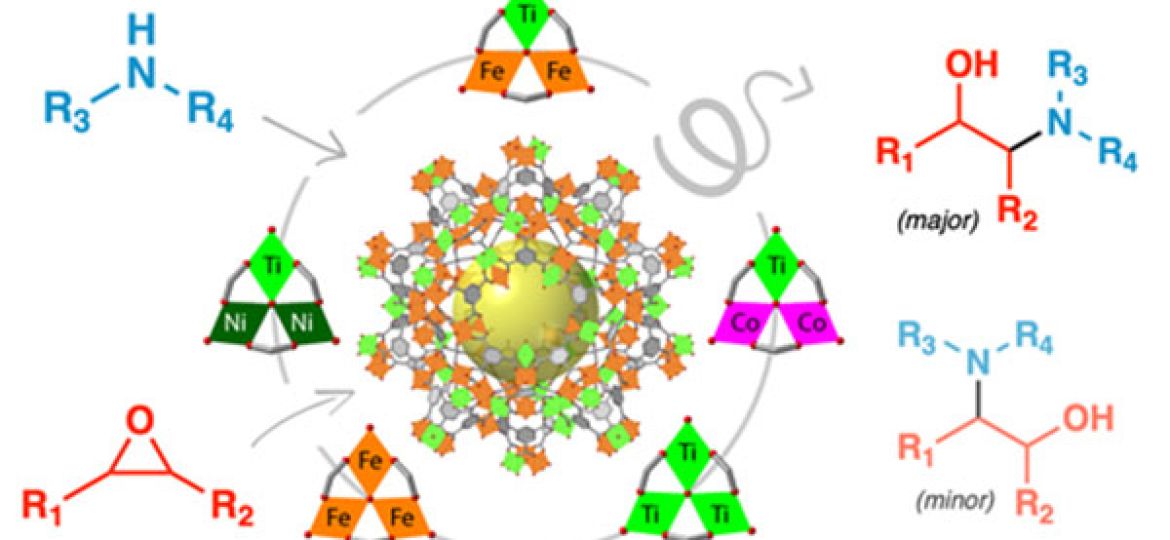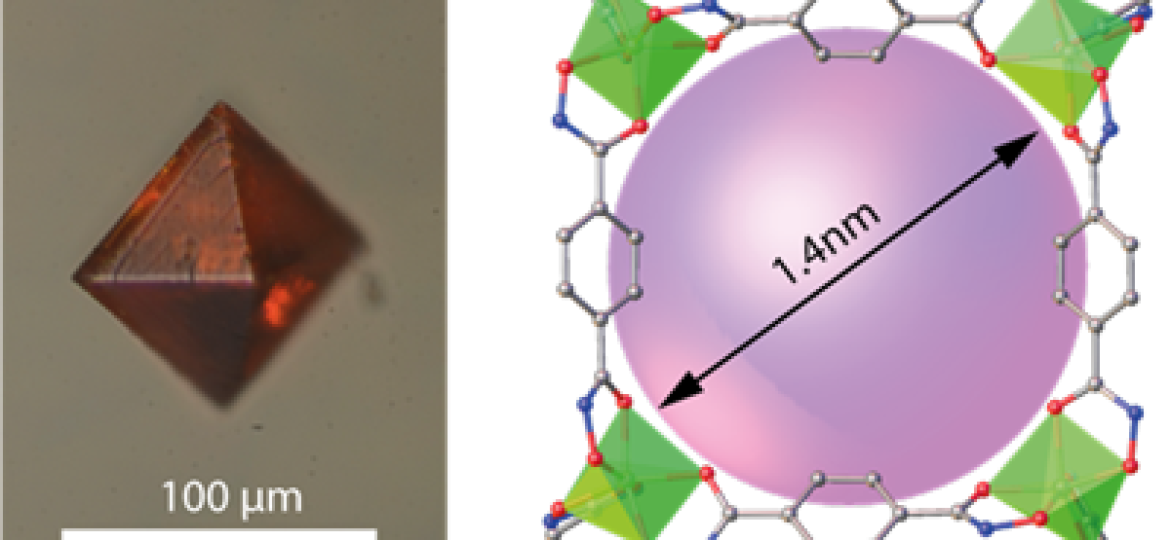An alternative mechanism for amine grafting in metal-organic frameworks (MOFs) is illustrated in the cover image and reported by Carlos…
In this paper, we explore the grafting of tetraamines into heterometallic MUV-10. The combination of hard and soft metal centers…
We have recently achieved a breakthrough in catalytic design by leveraging metal–organic frameworks (MOFs) as a porous platform to support…
This chapter explores metal-based catalysis within metal-organic frameworks (MOFs). It aims to offer readers a comprehensive understanding of various strategies…
We recently reported the possibility of using the heterometallic Ti Cluster [Ti2Ca2(µ3-O)2(RCO2)8(H2O)4] (Ti2Ca2) to assemble two isoreticular the nets: MUV-10…
Our latest research challenges conventional views on defects in crystalline frameworks. By transforming defects into controlled, correlated domains, we open…
This work combines novel techniques such as photo thermal induced resonance (PTIR) and hyperspectral photoluminescence (PL) microscopy to study in…
The manuscript illustrates the value of tetrazine units to wrap up the surface of UiO-68-TZDC crystals with a single-wall carbon…
Ana’s work has been published in JACS. In this work, we use the cluster composition to control the Brønsted acidic character of titanium-organic frameworks ultimately leading to great implications in catalysis.
Belen´s work has been published in JACS. The manuscript describes the use of hydroxamate linkers for the assembly of titanium-organic cages with permanent porosity (near 1200 m2·g-1) that are also amenable to multivariate modification.

